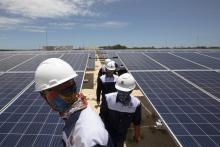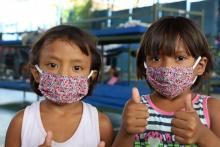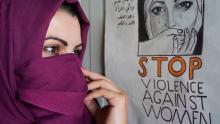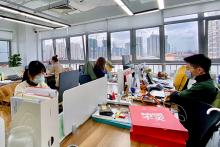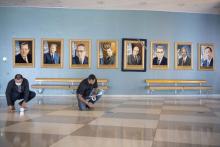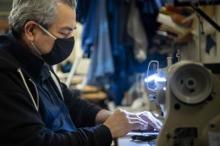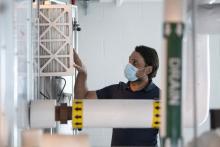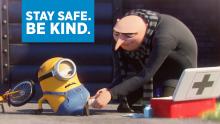The United Nations Department of Global Communications (DGC) promotes global awareness and understanding of the work of the United Nations.
UN urges protection of domestic workers’ rights during COVID-19 pandemic
Oscar-nominated actress Yalitza Aparicio rose to fame in the film Roma, where she starred as an indigenous domestic worker. There are an estimated 67 million domestic workers worldwide, the vast majority of whom are women. As they try to maintain their livelihoods, lack of access to social protection systems makes domestic workers especially vulnerable to the COVID-19 pandemic.
Portraits: UN interpreters adapt to new work modes during COVID-19
This story, with portraits taken remotely by UN Photo, shows how United Nations interpreters are responding to new challenges COVID-19 added to their already daunting job of providing simultaneous interpretation in six UN official languages – Arabic, Chinese, English, French, Russian and Spanish.
Never waste a crisis: Companies invest to ‘recover better’ from COVID-19
Smart businesspeople never let a crisis go to waste. As profits plummet and operations shutter due to the COVID-19 pandemic, the United Nations’ corporate partners are capitalizing on the downturn to build a safer, greener, fairer and more resilient global economy.
COVID-19 photo essay: We’re all in this together
The COVID-19 pandemic has demonstrated the interconnected nature of our world – and that no one is safe until everyone is safe. Only by acting in solidarity can communities save lives and overcome the devastating socio-economic impacts of the virus. In partnership with the United Nations, people around the world are showing acts of humanity, inspiring hope for a better future.
Battling COVID-19 misinformation hands-on
In such places as refugee camps where the availability of digital tools is limited, fighting rumours and myths about COVID-19 does not require sophisticated artificial intelligence. Refugees in Bangladesh’s Cox’s Bazar use bicycles and loudspeakers to deliver accurate information door to door.
UN supports LGBTI community during COVID-19 pandemic
With New York City’s Pride March this month to be organized virtually for the first time in its 50-year history, the United Nations is continuing to support lesbian, gay, bisexual, trans and intersex (LGBTI) people, who are among the most vulnerable during the COVID-19 pandemic.
UN supporting ‘trapped’ domestic violence victims during COVID-19 pandemic
Around the world, stay-at-home measures put in place to reduce the spread of COVID-19 resulted in women and girls being trapped indoors, unprotected from violence and abuse. The United Nations is working with Governments to make the prevention and redress of violence against them a key part of their national response plans. Unique solutions are emerging. In some European countries, pharmacies and supermarkets have become “go-to” places where the utterance of a code word (“MASK 19”) signals an urgent cry for help.
COVID-19: UN helps countries fight complacency as they reopen
In some countries, businesses are slowly opening again and students are returning to school, following COVID-19-induced closures. Elsewhere, the pandemic is yet to peak. The United Nations is working with Governments to fine-tune plans to reopen battered economies while warning that complacency and lifting “stay-at-home” orders and other restrictions too fast could invite a second wave of new cases.
An Inside Look: Next steps towards ‘new normal’ in UN Headquarters
To comply with local health advisories, the United Nations Headquarters complex has remained largely closed since mid-March, with only a few hundred personnel coming to work to perform on-site functions. However, with New York City gradually moving to ease those restrictions, the UN is also gearing up for its return to normalcy in three phases.
Kids and families broaden global perspectives during COVID-19
With children spending large portions of the day at home due to COVID-19, the United Nations is helping families use the opportunity to teach young people about global challenges, including not only the health pandemic but also poverty, hunger and climate change.








